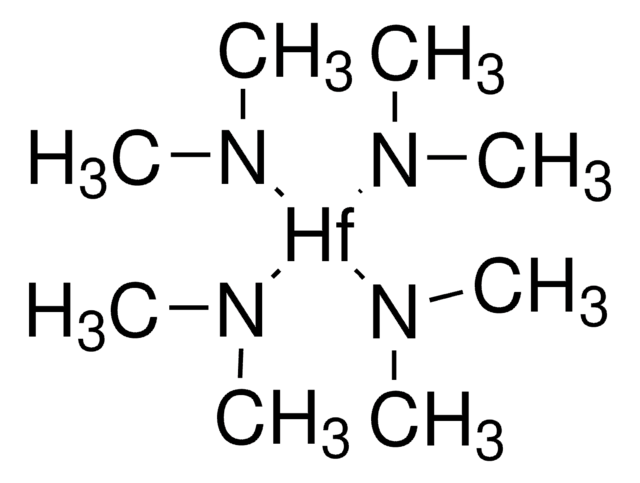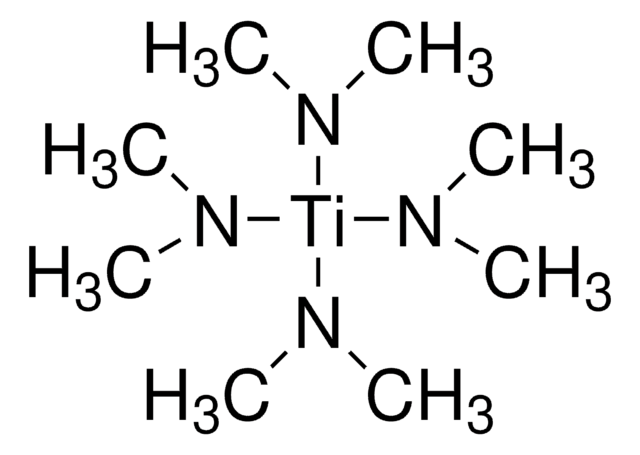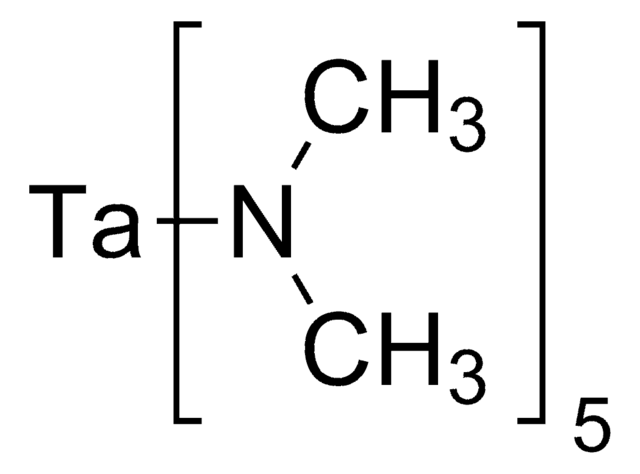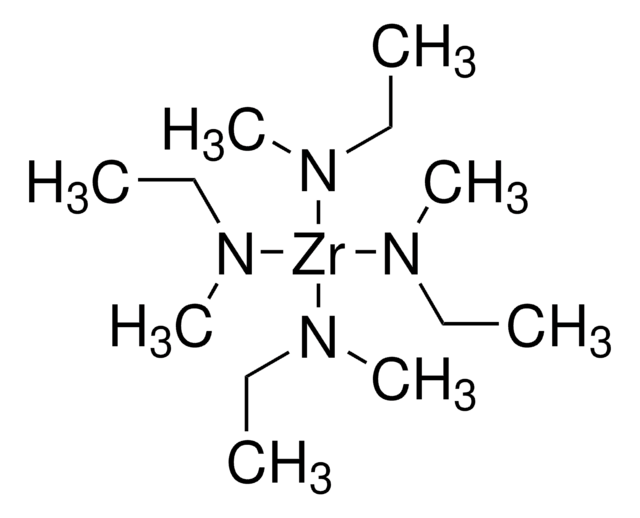469858
Tetrakis(dimethylamido)titanium(IV)
99.999% trace metals basis
Synonym(s):
TDMAT, Tetrakis(dimethylamino)titanium(IV)
About This Item
Recommended Products
Quality Level
Assay
99.999% trace metals basis
form
liquid
reaction suitability
core: titanium
bp
50 °C/0.5 mmHg (lit.)
density
0.947 g/mL at 25 °C (lit.)
SMILES string
CN(C)[Ti](N(C)C)(N(C)C)N(C)C
InChI
1S/4C2H6N.Ti/c4*1-3-2;/h4*1-2H3;/q4*-1;+4
InChI key
MNWRORMXBIWXCI-UHFFFAOYSA-N
Looking for similar products? Visit Product Comparison Guide
General description
Application
accessory
Signal Word
Danger
Hazard Statements
Precautionary Statements
Hazard Classifications
Flam. Liq. 2 - Skin Corr. 1B - Water-react 1
Supplementary Hazards
Storage Class Code
4.3 - Hazardous materials which set free flammable gases upon contact with water
WGK
WGK 3
Flash Point(F)
-22.0 °F - closed cup
Flash Point(C)
-30 °C - closed cup
Personal Protective Equipment
Choose from one of the most recent versions:
Already Own This Product?
Find documentation for the products that you have recently purchased in the Document Library.
Customers Also Viewed
Articles
Titanium dioxide (TiO2) is an important n-type semiconducting material that shows interesting characteristics such as photoswitchable surface wettability, high photocatalytic activity, bistable electrical resistance states and high electron drift mobility.
Since the demonstration of the first practical solar cell 60 years ago, research on novel materials, improved solar cell design and structure, and innovative manufacturing processes have all contributed to a continuous increase in the efficiency of photovoltaic (PV) devices.
The properties of many devices are limited by the intrinsic properties of the materials that compose them.
Nanomaterials are considered a route to the innovations required for large-scale implementation of renewable energy technologies in society to make our life sustainable.
Our team of scientists has experience in all areas of research including Life Science, Material Science, Chemical Synthesis, Chromatography, Analytical and many others.
Contact Technical Service










